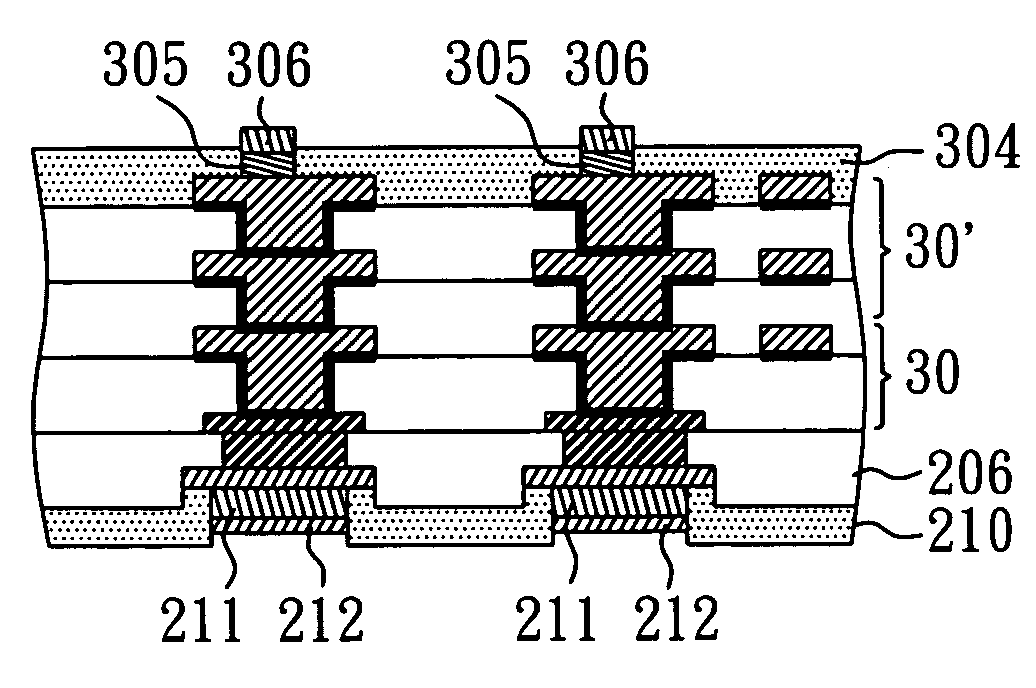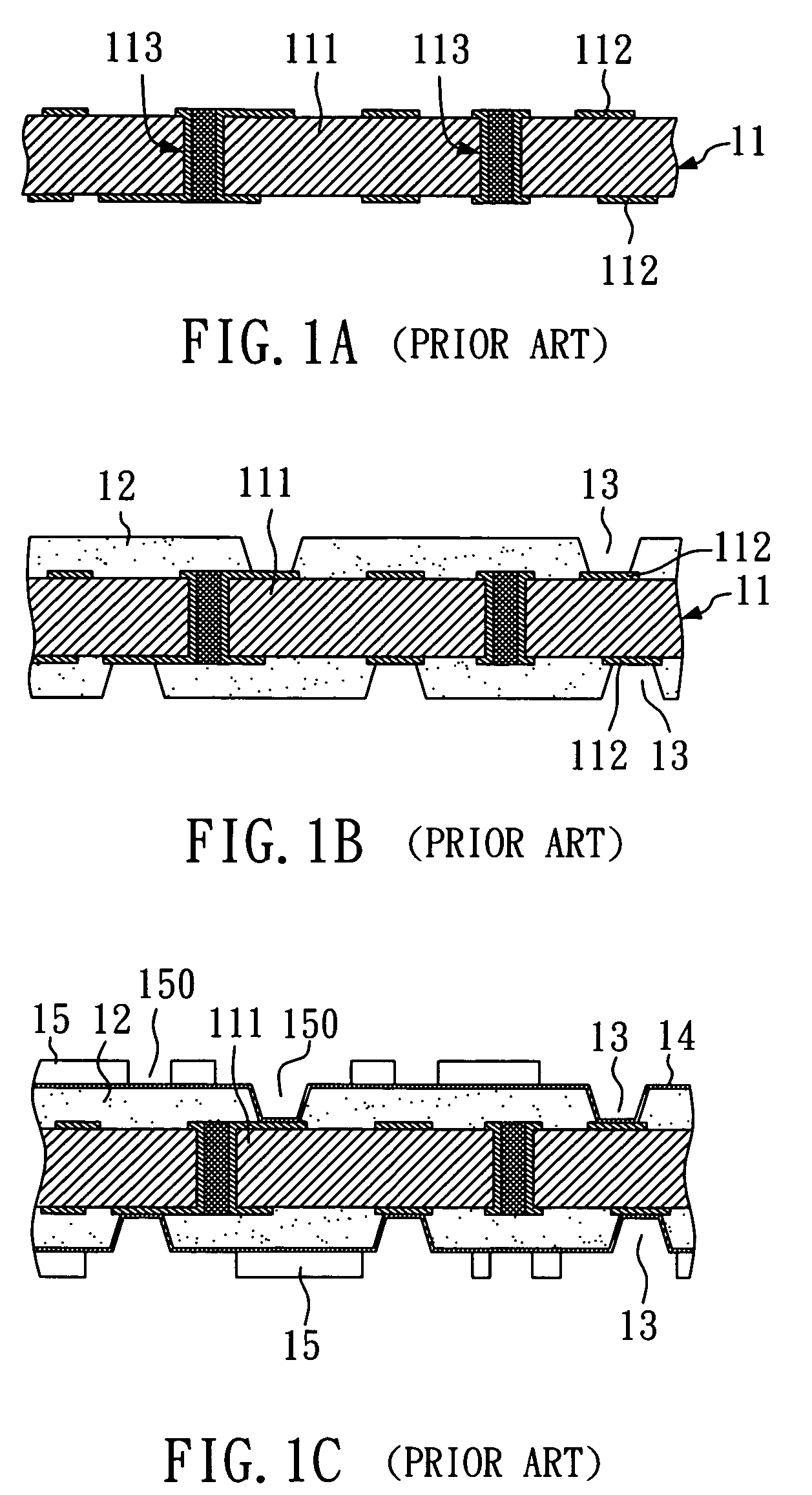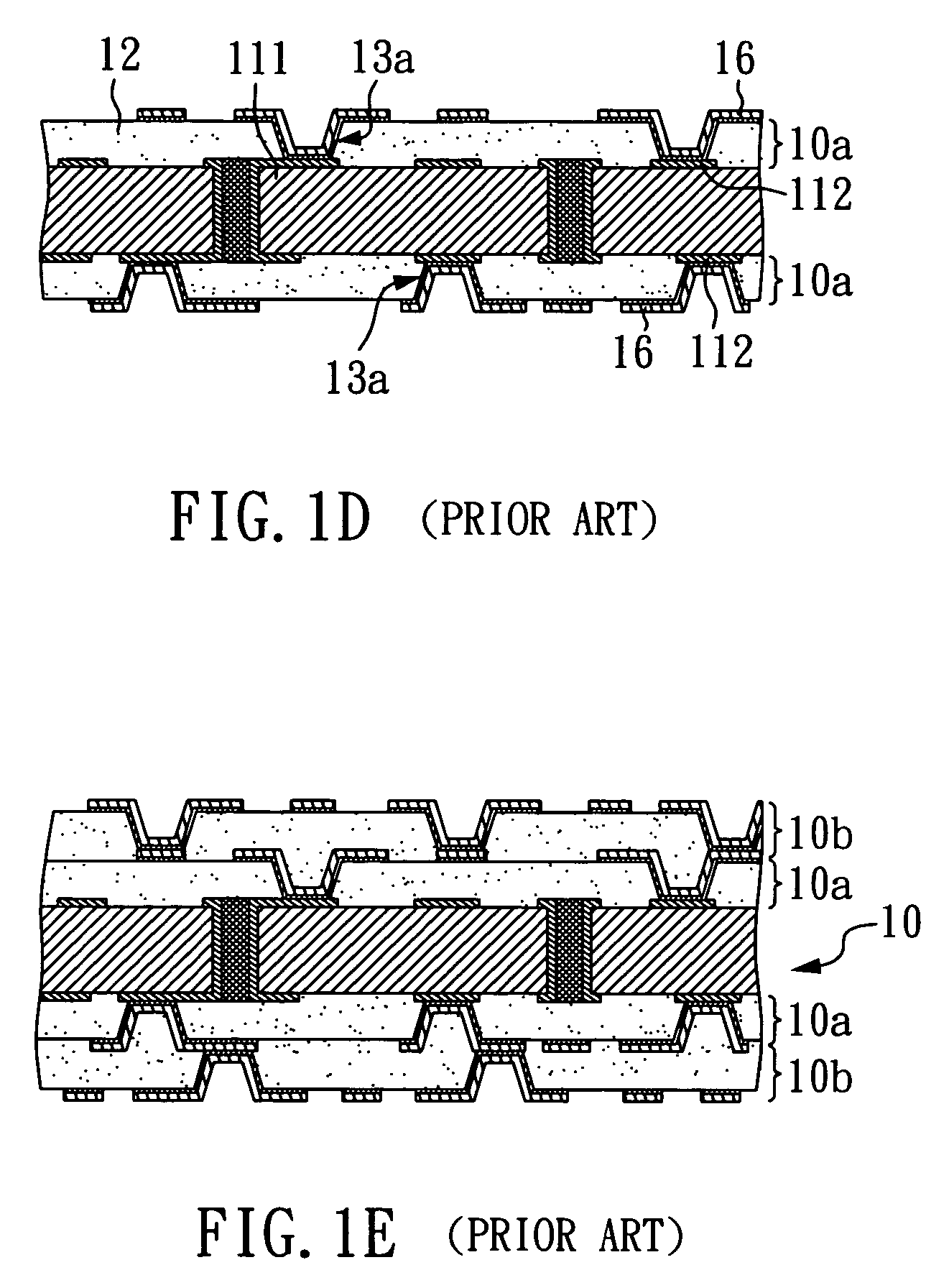Coreless package substrate with conductive structures
a technology of conductive structure and coreless package, which is applied in the direction of electrical apparatus construction details, non-metallic protective coating applications, and association of printed circuit non-printed electric components, etc., can solve the problems of serious compromise in the manufacture of multi-layer substrates, the thickness of the final multi-layer substrate cannot be reduced, and the use of higher frequency and operation at higher speed is restricted. , to achieve the effect of reducing the thickness of the substrate, raising the wiring density
- Summary
- Abstract
- Description
- Claims
- Application Information
AI Technical Summary
Benefits of technology
Problems solved by technology
Method used
Image
Examples
Embodiment Construction
[0034]FIGS. 2A to 2Q are schematic cross-section illustrations of a coreless package substrate of a preferred embodiment of the present invention. First, as shown in FIG. 2A, a metal carrier board 201 is provided. Then, as shown in FIG. 2B, a first resistive layer 202 is formed on the carrier board 201. As shown in FIG. 2C, a plurality of first openings 202a are formed in the first resistive layer to expose parts of the carrier board 201 underneath. Subsequently, as shown in FIGS. 2D and 2E, an etching-stop layer 204 and a first metal layer 205 are in turn formed in the first openings 202a. In this example, the first resistive layer 202 is a dry-film photoresistive layer.
[0035]Referring to FIG. 2F, the first resistive layer 202 is removed. As shown in FIG. 2G, a dielectric layer 206 made of ABF (Ajinomoto Build-up Film) is formed on the surfaces of the carrier board 201 and the first metal layer 205, wherein a plurality of openings 206a is formed by laser ablation in the dielectric ...
PUM
| Property | Measurement | Unit |
|---|---|---|
| thickness | aaaaa | aaaaa |
| diameter | aaaaa | aaaaa |
| diameter | aaaaa | aaaaa |
Abstract
Description
Claims
Application Information
 Login to View More
Login to View More - R&D
- Intellectual Property
- Life Sciences
- Materials
- Tech Scout
- Unparalleled Data Quality
- Higher Quality Content
- 60% Fewer Hallucinations
Browse by: Latest US Patents, China's latest patents, Technical Efficacy Thesaurus, Application Domain, Technology Topic, Popular Technical Reports.
© 2025 PatSnap. All rights reserved.Legal|Privacy policy|Modern Slavery Act Transparency Statement|Sitemap|About US| Contact US: help@patsnap.com



